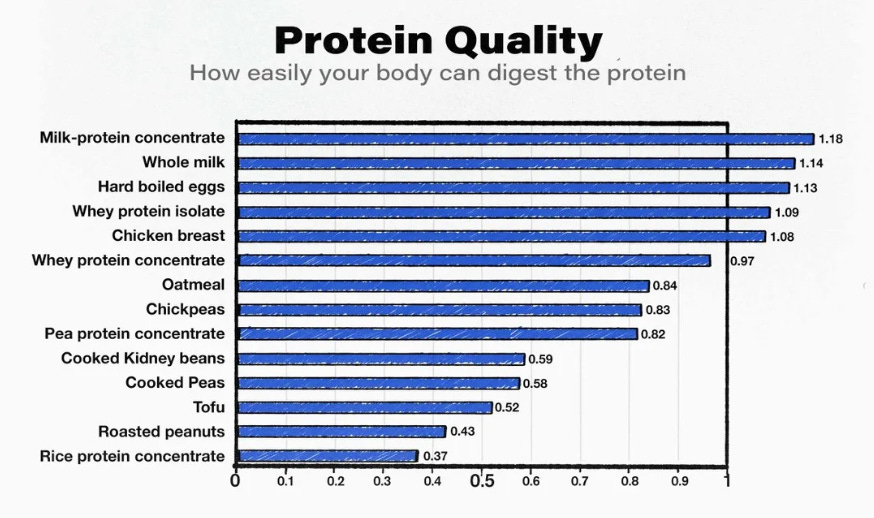· weightlifting · 9 min read
Does Flexing Build Muscle? The Shocking Truth
Are you looking to gain muscle and achieve the physique of your dreams? If so, you may have wondered if flexing alone can help you build muscle.

Are you looking to gain muscle and achieve the physique of your dreams? If so, you may have wondered if flexing alone can help you build muscle. In this article, we’ll explore the effectiveness of flexing as a muscle-building technique and provide some pointers on how to incorporate it into your workout routine. Whether you’re a beginner or a fitness enthusiast, understanding the role of flexing in muscle building is crucial for reaching your goals. So, let’s dive in and discover the truth about flexing and its benefits for building muscle.
What Is Flexing?
Flexing, also referred to as posing, is the deliberate flexing of muscles to create a more defined and toned appearance. This technique is often used by bodybuilders, fitness competitors, and those wanting to showcase their physique. Not only does flexing allow individuals to evaluate their muscle development, but it also demonstrates muscular control and aesthetics in a variety of fitness and bodybuilding competitions.
How Does Flexing Work?
- Activation: When you flex a muscle, it contracts, enhancing blood flow and activating muscle fibers.
- Strength Display: Flexing showcases muscle definition and tone, demonstrating strength and fitness. Pro-tip: Flexing before a workout can help improve mind-muscle connection, optimizing your training.
Does Flexing Build Muscle?
Flexing alone does not significantly contribute to muscle growth. Simply flexing or contracting muscles without any form of resistance training will not lead to substantial muscle development. In order to effectively build muscle, it is important to incorporate resistance exercises such as weightlifting or bodyweight exercises. These types of activities create the necessary stress to stimulate muscle growth and adaptation.
It is important to keep in mind that muscle growth occurs through progressive overload and proper nutrition. Therefore, engaging in strength-training exercises and consuming enough protein is crucial for muscle development.
What Are The Different Types Of Muscle Contractions?
There are three types of muscle contractions: concentric, eccentric, and isometric. During a concentric contraction, the muscle shortens while generating force, as seen when lifting a weight. An eccentric contraction involves the muscle lengthening while under tension, such as during the lowering phase of weightlifting. Isometric contractions occur when the muscle generates force without changing in length, like in a yoga pose. Understanding these distinctions is essential for comprehending how exercise movements affect muscle development.
What Are The Benefits Of Flexing?
Flexing is often associated with showing off one’s muscles, but there’s more to it than meets the eye. In fact, flexing can have numerous benefits for your muscles and overall fitness. In this section, we’ll dive into the various advantages of flexing, including increased blood flow to muscles, improved mind-muscle connection, convenience, and even aiding in recovery. So let’s flex our way to a better understanding of this often misunderstood practice.
- Increases Blood Flow To Muscles
- Engage in cardiovascular exercise, such as running or cycling, to increase blood flow to your muscles.
- Try dynamic stretching before your workouts to enhance blood circulation to your muscles.
- Stay hydrated by drinking an adequate amount of water throughout the day to support optimal blood flow.
To ensure optimal muscle function, it is essential to maintain proper blood flow. By incorporating these practices, you can aid in maximizing blood flow to your muscles and enhance your overall workout performance.
- Improves Mind-Muscle Connection
- Focus on the muscle: Concentrate on engaging and contracting the specific muscle during exercises to improve mind-muscle connection.
- Visualize the movement: Imagine the muscle working through the entire range of motion to strengthen the mind-muscle link.
- Use slower reps: Perform exercises deliberately to establish a strong mind-muscle connection and improve the mind-muscle link.
- Practice isolation exercises: Incorporate movements that target individual muscles to intensify the mind-muscle link and enhance the mind-muscle connection.
- Can Be Done Anywhere
- Flexing can be done anywhere, whether at home, in the office, or even outdoors.
- It requires minimal space and no equipment, making it highly versatile.
- Simple flexing exercises, such as bicep curls or calf raises, can easily be incorporated into daily routines.
Pro-tip: Take advantage of idle moments, like waiting for a kettle to boil or a traffic light to change, to sneak in some flexing exercises.
- Can Help With Recovery
- Restoration: Flexing aids in promoting blood circulation, which assists in delivering essential nutrients to muscles for faster recovery.
- Relaxation: It can help relieve muscle tension, reducing the risk of injury and enhancing overall post-workout comfort.
- Rejuvenation: Engaging in flexing exercises can contribute to the relaxation of muscles, thereby supporting their recovery process.
Did you know? Flexing after a workout can aid in reducing muscle soreness and promoting relaxation. Additionally, it can also help with recovery.
What Are The Risks Of Flexing?
While flexing may seem like a harmless way to show off your muscles, there are actually some potential risks involved. In this section, we will explore the possible downsides of flexing and how it can affect your overall muscle development. From the strain it can put on your muscles to the risk of overtraining, we will discuss the potential consequences of excessive flexing and how to avoid them.
- Can Cause Strain On Muscles
- Overexertion: Flexing excessively or with improper form can cause strain on muscles, leading to injury.
- Preventive Measures: Warm up before flexing, maintain proper form, and avoid overexertion to minimize the risk of muscle strain.
In the 19th century, circus strongmen showcased their strength through muscle flexing, sparking the modern phenomenon of bodybuilding competitions.
- Can Lead To Overtraining
- Overtraining Risks: 2. Can lead to overtraining, causing muscle fatigue and potential injury.
- Signs to Watch for: Persistent fatigue, decreased performance, and increased susceptibility to illness.
- Prevention Measures: Listen to your body, incorporate rest days, and vary workout intensities.
- Consult a Professional: Seek guidance from a fitness trainer or healthcare provider to avoid overtraining.
Remember, balance is crucial in any fitness routine. Pushing too hard can lead to detrimental effects, so always prioritize safe and sustainable practices in your fitness journey.
How Often Should Someone Flex To See Results?
When it comes to building muscle, many people wonder how often they should be flexing their muscles for maximum results. In this section, we will discuss the importance of incorporating flexing into your workout routine and how it can vary depending on your individual goals. Whether you are looking to increase muscle size, definition, or simply improve overall strength and function, there are important factors to consider when determining how often to flex. Let’s dive into the details.
- Depends On Individual Goals
- Set personalized goals based on muscle building, flexibility, or overall fitness.
- Consult a fitness professional to tailor a flexing routine to your specific objectives.
- Consider factors like age, body type, and existing fitness level when determining your flexing frequency.
Fact: Flexing can contribute to muscle growth when incorporated into a comprehensive fitness regimen that is tailored to individual goals.
- Should Be Incorporated Into Regular Workout Routine
-Start by incorporating 2-3 flexing sessions into your regular workout routine.
- Include a variety of flexing exercises targeting different muscle groups during each session.
- Focus on proper form and technique to ensure maximum muscle engagement and avoid injury.
- Gradually increase the intensity and duration of flexing sessions as your strength and endurance improve.
What Are Some Other Ways To Build Muscle?
In addition to flexing, there are many other methods for building muscle. These include resistance training, proper nutrition, and adequate rest and recovery. Each of these plays a crucial role in developing and maintaining muscle mass. Let’s explore these options and how they can contribute to building a strong and toned physique. By incorporating these techniques into your routine, you can achieve your muscle-building goals and improve your overall health and fitness.
- Resistance Training
- Resistance training involves using a force or weight to work your muscles. This can be achieved through free weights, resistance bands, or weight machines.
- To target multiple muscle groups at once, focus on compound movements such as squats, deadlifts, and bench presses.
- It is important to maintain proper form and technique to prevent injuries and effectively engage your muscles.
- To promote muscle growth, gradually increase the resistance or weight as your muscles become stronger and more accustomed to the exercises.
- Proper Nutrition
- Achieve balance: Consume a mix of macronutrients - proteins, fats, and carbohydrates to support muscle growth and energy levels.
- Stay hydrated: Drink adequate water to aid digestion, absorption, and circulation of nutrients.
- Include micronutrients: Ensure intake of vitamins and minerals through fruits, vegetables, and supplements.
- Control portions: Manage portion sizes to avoid overeating and maintain a healthy weight.
In the 2nd century, Galen of Pergamon emphasized the importance of proper nutrition for good health and physical strength. He prescribed specific foods for different ailments, laying the foundation for modern nutritional science.
- Adequate Rest and Recovery
- Get enough sleep: Aim for 7-9 hours of sleep per night to allow your muscles to recover and repair.
- Rest between workouts: Give muscle groups at least 48 hours of rest before working them again.
- Proper nutrition: Consume enough protein, carbs, and healthy fats to aid muscle recovery.
- Hydration: Drink plenty of water to help with muscle repair and recovery.
Frequently Asked Questions
Does flexing build muscle?
Yes, flexing can help build and strengthen muscles, especially when combined with a proper workout routine and a balanced diet.
How does flexing build muscle?
When you flex a muscle, you are contracting and engaging the muscle fibers, which helps to increase blood flow and deliver important nutrients to the muscle. This process contributes to muscle growth and strength.
Is flexing alone enough to build muscle?
No, while flexing can contribute to muscle growth, it is not enough on its own. In order to effectively build muscle, you need to engage in resistance training and consume enough protein and calories to support muscle growth.
Can flexing help with muscle definition?
Yes, flexing can help with muscle definition by engaging and contracting the specific muscles you want to define. However, to truly achieve muscle definition, you also need to decrease your body fat percentage through a combination of diet and exercise.
Is flexing beneficial for all muscle groups?
Flexing can be beneficial for all muscle groups, as it helps to engage and activate the muscles. However, for optimal muscle growth and definition, it is important to also vary your resistance training exercises and target all muscle groups.
Can over-flexing lead to muscle strain or injury?
Yes, over-flexing can put unnecessary strain on the muscles and may lead to injury. It is important to listen to your body and avoid excessive flexing, especially if you are experiencing discomfort or pain.





